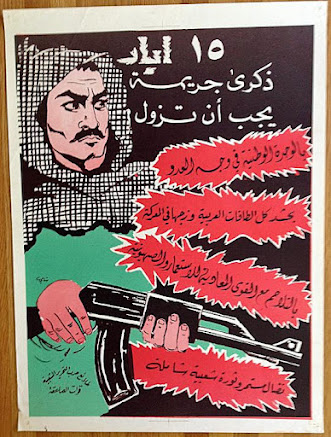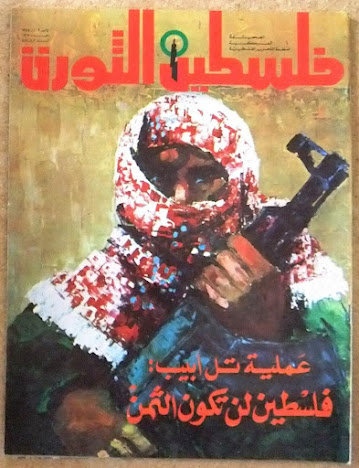Protesters in the United States who wear the keffiyeh at protests are not doing it because they are hoping to engage in hate crimes without being identified. Rather, they know that if they do not protect themselves, in the same way Palestinian revolutionaries did during the British mandate, they will expose themselves to the dangers of state surveillance and doxxing.
Oh, so they aren't wearing them not to be identified - they are wearing them not to be, um, identified. Anti-Israel organizers say that they are to avoid getting into legal trouble. They recommend wearing a mask at all times - not a keffiyeh but anything that covers the face.
These are exactly the same reasons white supremacists wear masks.
When the article discusses "the rich, proud history of the keffiyeh" it pointedly avoids mentioning how Palestinians themselves associate the scarf with violence.
The official Palestinian news agency said the keffiyeh is "a symbol of martyrs and prisoners" - meaning, terrorists.
More explicitly, decades of political posters by Palestinians and their supporters have directly associated the keffiyeh with weapons and violence.
Fatah poster, 1968:
Al Saiqa poster, 1968:
Leftist magazine cover, 1970:
Palestinian magazine cover celebrating the Savoy Hotel terror attack, 1975:
General Union of Palestinian Students rally, 1975:
1980 artwork:
2002, Fatah, during the height of the second intifada:
2007, Fatah:
The iconic photos of Leila Khaled:
And of terrorist Dalal Mughrabi:
And graphic artists are even associating the keffiyeh with violence today, as this poster celebrating October 7 shows:
It is entirely appropriate to compare the symbolism of the keffiyeh to the Confederate flag, or wearing it as a mask at rallies to KKK hoods. It means support for both Palestinian violence and protection for antisemitic protester violence and criminal activities.













